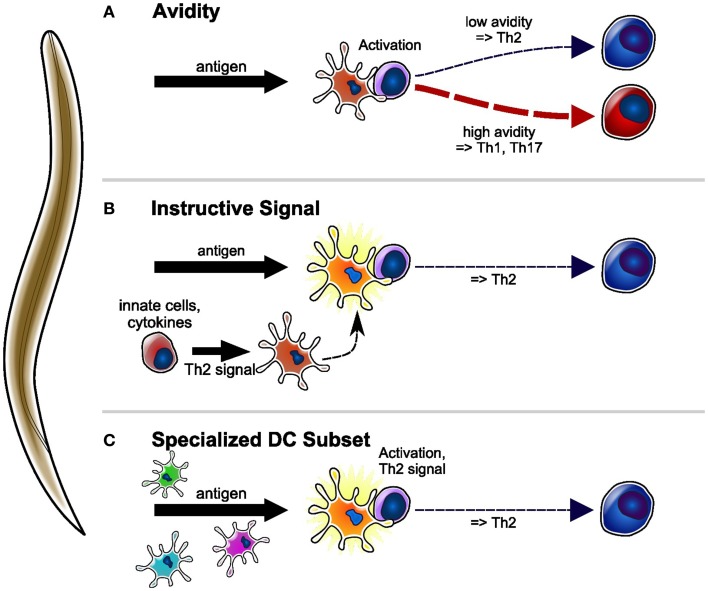Figure 1.
Proposed models of Th2 differentiation induced by helminth parasite antigens presented by DC. (A) Antigen taken up by DC is presented to specific CD4 + T-cells. Low-avidity interactions between CD4 + T-cell and DC result in the priming of Th2 cells, whereas high avidity interactions result in the priming of Th1 or Th17 cells. (B) DC conditioned by parasite-induced innate cytokines/cells, or directly conditioned by parasite products, acquire the ability to prime Th2 responses. Th1 and/or Th17 responses are initiated by DC conditioned by other innate signals. (C) A specific DC subset that is uniquely able to take up parasite material is programed to prime Th2 immune responses. The priming of other T-cell phenotypes requires other DC subsets.

